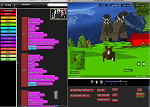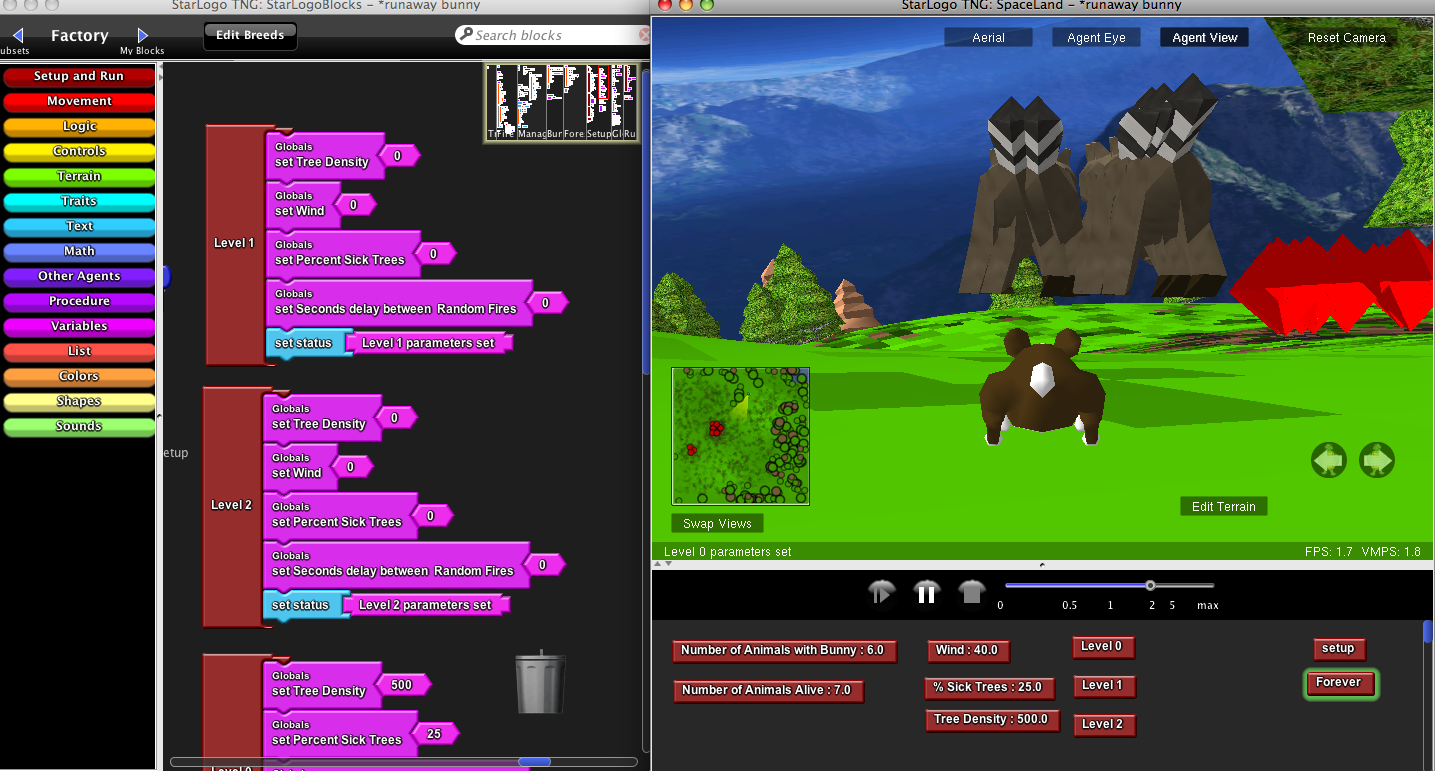Forest Fire Unit

When is a fire “good” and when is it “bad”? What is the role of humans in preventing and stopping wildland fires? Students use StarLogo TNG simulation models of forest fires to explore these essential and provocative questions which have no simple answers. Students conduct experiments, make observations, collect and interpret data, and use their findings to make informed risk-benefit decisions in game-like challenges using the modeling software. Students also engage in simple programming to modify the behavior of the model.
The curriculum unit includes 4 activities over 7 class periods (assuming 45-50 minutes per class). Although the unit is designed for middle school science classes, the activities also provide a general introduction to StarLogo TNG modeling and programming and highlight the value of simulations modeling in modern science. Also, the unit activities can be used in conjunction with other classroom activities about forest fires and the forest ecosystem.
Download the entire curriculum as a zip file .
Forest Fire At-A-Glance
For a more detailed overview of the curriculum, see the
forest fire overview
and
learning objectives
.
| Lesson Description | Materials |
|---|---|
| Introduction : Students experiment with wind and tree density variables in a forest fire simulation to determine how these two variables affect the spread and devastation of a fire that starts randomly in a forest. In a programming activity, students modify the simulation to observe the effects of the terrain on fire spread. | |
| Firescaping : By programming the movements of a fire fighter in the forest fire simulation, students cut firebreaks and start fires to determine an ideal firebreak width that will prevent fires from “jumping.' Once the ideal firebreak width is found, students are challenged to design a forest by using firebreaks and replanting trees to decrease the devastation caused by a random fire. | |
| Prescribed Burn : In a model that simulates the accumulation of dead plant matter over time, students experiment with the number of sick trees to determine the tipping point that would result in a destructive fire. Students then modify the simulation to include fire fighters that randomly burn sick trees to maintain a healthy forest. |
|
| Runaway Bunny Game : Students play a game where they control a bunny in a forest where random fires start every x number of seconds. The game objective is to get to safety while saving as many animals as possible by having them follow the bunny to safety. Students use what they learned about how forest fires spread by designing difficulty levels for the game. |
Sample Lesson
In the final lesson, Runaway Bunny Game, students apply the knowledge and insight they've gained about forest fire spread to design different levels for the game by tweaking variables in a forest such as wind, tree density, and the percentage of sick trees.

- Login to post comments